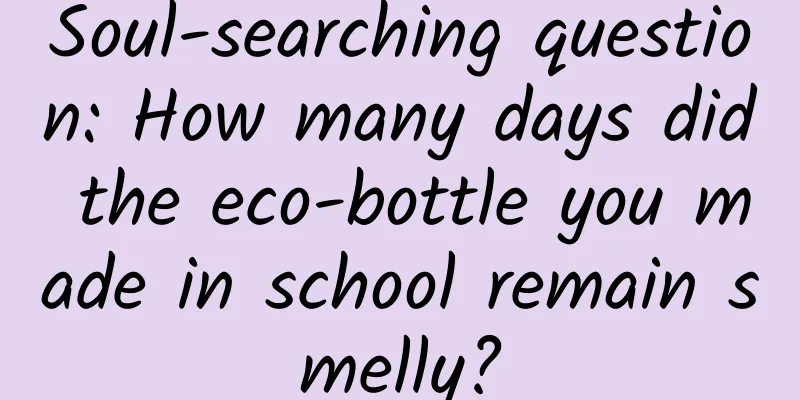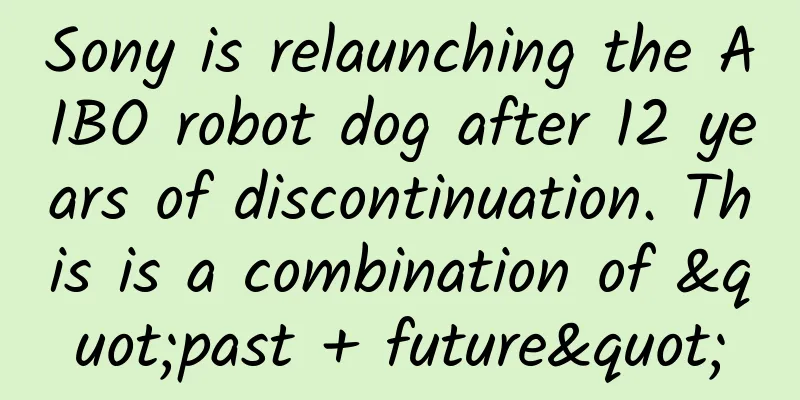Soul-searching question: How many days did the eco-bottle you made in school remain smelly?

|
Whether it is elementary school, junior high school, or high school textbooks, there is an experiment mentioned - making an eco-bottle . In most schools, this experiment is optional and rarely takes up precious laboratory class time. It is usually assigned by teachers as homework and asked students to do it at home. Why? Because if this eco-bottle is really made, the failure rate is actually very high . Generally speaking, eco-bottles are made very beautifully at the beginning - clean bottom sand, swaying water plants, lively fish and shrimp. But often after a while, the situation starts to go wrong, some begin to bloom with green algae , some water plants are eaten away , and some fish and shrimp die . If the bottle is not sealed, the dead plants and animals will be decomposed by bacteria , turning into a bottle of turbid and smelly water. So if every student made an eco-bottle and lined them up on the windowsill, it would soon become like an aquatic hell, unbearable to look at. It is very rare to find an eco-bottle that can last for several months. Ready-made eco-bottles for sale online, everything is beautiful | Wicker Paradise / flickr After a while, algae blooms, dead shrimp, smelly water, and other problems occurred frequently | Mike Prosser / flickr So, why is it so difficult to make an eco-bottle? Is it because students are clumsy? No. The real reason is that the textbook describes the making of an eco-bottle too briefly. Due to the difficulty of the teaching content, many key points are not explained clearly. What's in the eco bottle? Let's review the knowledge in the textbook first. The so-called eco-bottle is actually a simulation of a closed ecosystem . The bottle must contain the four components of the ecosystem: producers, consumers, decomposers and non-biological components . Among them, producers are mainly green plants and some algae, which fix energy and produce organic matter through photosynthesis. Consumers and decomposers need to rely on the energy in these organic matter to survive. A simple diagram of the composition of an ecosystem | Roddelgado / Wikimedia The organisms in an ecosystem are connected through the relationship of eating and being eaten, which is the food chain and food web. Since each organism must use most of the energy it obtains for its own growth and reproduction, the efficiency of energy transfer along the food chain is very low . High school textbooks say it is 10% to 20%, which seems low, but in fact it is already high and generally occurs in aquatic ecosystems. In terrestrial ecosystems, the energy transfer efficiency is often only a few percent. Since the energy in an ecosystem will not come back once it is dissipated, the most important thing for a closed ecosystem to maintain stability is energy balance . The total energy consumed by animals must be much less than the total energy fixed by plants. Unlike the open systems we usually use to raise goldfish, such as water tanks (which require water changes and feeding), eco-bottles are closed systems with no input except sunlight. If the animals in them eat too much and exceed the fixed energy of the producers, the system will collapse. | Souravgg8 / Wikimedia To use a simple analogy from real life, plants are like parents who work to earn money, and animals are like school-age children. If this family wants to be stable, the most basic condition is that the necessary expenses of the children must be less than the total income of the parents, and they cannot spend more than they earn. The reason why most eco-bottles collapse is that the animals are not chosen properly , and a gold-eating beast is kept in the bottle. For example, I have seen students put a few water plants and a goldfish in a 1-liter bottle. Not to mention whether the goldfish likes to eat the water plants, even if it does, the daily growth of the water plants is not enough for it to eat. In the end, the goldfish became thinner and thinner, and died of starvation after living for more than a month. How to choose plants and animals Therefore, if you want to prevent famine in the eco-bottle, you need to choose the right settlers. Producers should choose plants that grow or reproduce quickly , such as black algae and elodea. Black algae | Yercaud-elango/Wikimedia As for animals, first of all, we limit the scope to species that can be seen with the naked eye. Although those that are too small are more suitable from an ecological perspective, you can't tell whether they are dead or alive. So we have to find aquatic animals that are small, eat little, and grow slowly , such as some small herbivorous or omnivorous fish. One or two of the size of a guppy will be enough. Shrimp is also OK, but it is easy to die suddenly and is not easy to raise. Although snails are easy to raise and meet the requirements, you must only put one , otherwise it will give birth to a bunch of small snails. For example, for a 2-liter bottle or tank, you will need about 5 to 6 20-centimeter-long black algae and one or two fish. The specific ratio needs to be slowly adjusted. Guppy | Vincent Eisfeld / Wikimedia Successful eco-bottle is difficult Once the plants and animals are selected, the eco-bottle is halfway to success . The other half is actually the most difficult to grasp, which is the invisible microorganisms . On Earth, no matter which ecosystem it is, microorganisms are a very important part. Some of them can produce organic matter, and some can decompose the remains of other organisms. If the microbial population in an eco-bottle is not the right one, it will also quickly collapse. I once observed the eco-bottles made by junior high school students. They were all made of glass canning bottles. The fish were starved to death. One of the bottles had its lid open, and the other remained sealed. In this way, the main difference between the two bottles was bacteria and other microorganisms. The bottle with the lid open quickly became foul and turbid due to the entry of bacteria from the air; while the sealed bottle, after more than half a year, still had clear water and green grass. The only change was that the dead fish turned into fine mud at the bottom of the bottle, without a single fish bone left. In some textbooks, students are asked to find water and bottom mud in natural waters. This is unreasonable and will greatly reduce the controllability of the eco-bottle, because the types and numbers of microorganisms in different natural environments vary greatly. A more feasible method is to use bottom sand or stones for aquariums , and add clean tap water that has been left to stand overnight. Euglena can be seen in water under a microscope | Environmental Protection Agency However, even if these points are taken into consideration, it can only increase the success rate of the eco-bottle, but it cannot guarantee success . This is because the ecosystem is a very complex system, and it can be said that one move affects the whole system. Decades ago, the Biosphere 2 , which cost huge manpower and material resources to build, ended in failure. It is normal for a small ecosystem that is simply simulated at home to collapse. The interior of Biosphere 2. The savannah area is in the foreground and the ocean area is in the background | Wikimedia So I think the significance of the eco-bottle experiment in the textbook is not to help people understand the ecological principles that will be tested in the exam, but to let students understand: you can't keep a small eco-bottle for long, and once the complex ecosystem around you is destroyed, there will be no way to deal with it . If you don't protect the environment, you will die like the fish in the bottle... Author: Desert Porcupine Cover image source: pixabay This article comes from the Species Calendar, welcome to forward If you need to reprint, please contact [email protected] |
<<: Why is the antigen still negative even though the symptoms are already obvious?
>>: Year-end review: This year, we pursued our dreams and settled in space
Recommend
Analysis | Why is it becoming increasingly difficult to make Internet products?
Recently, Andrew Chen, head of user growth at Ube...
Must read! Case study of adding fans in the industry. It is not a problem to attract 10,000 fans a day~
A student who has just switched to information fl...
An analysis of how to play private domain traffic across platforms!
Private domain traffic is not exclusive to the We...
What are we talking about when we talk about urban biodiversity?
According to legend, a large company interviewed ...
Want to get rid of odor? Garlic lovers may try drinking yogurt
Science and Technology Daily, Beijing, September ...
A new perspective on the origin of the universe! The universe unfolds: time disappears in the Big Bang?
Understanding the origin of the universe has alwa...
If you don’t want your bones to become more and more brittle, eat less of these two types of food!
This article was reviewed by Ao Rongguang, MD, Ma...
[Master Hong on Chaos] Breaking Chaos with Chaos, Breaking the Nameless Chaos Theory with Wisdom Course (Second Edition) 2022
[Master Hong on Chaos] Break the Chaos with Chaos...
Tieling SEO Training: Reasons why rankings are still high even if the content is not updated
Most of the work done by search engine optimizati...
The "dilemma" of mild myopia: Can I not wear glasses? !
Review expert: Peng Guoqiu, deputy chief physicia...
Will humans become extinct? If so, what will cause it?
As a planet with life, the Earth is rich in speci...
NetEase Cloud Music Product Analysis: The Product Logic Behind the Drastic Increase in Data
NetEase Cloud Music was launched in April 2013, a...
NetQin was repeatedly attacked by Muddy Waters because of the help of "insiders"
Recently, the US short-selling agency Muddy Water...
How to improve the conversion rate of the lead generation training camp?
The following is a review of a recently concluded...
Xiaomi's marketing crisis was cleverly resolved by Alibaba
With the full explosion of social traffic in 2016...









